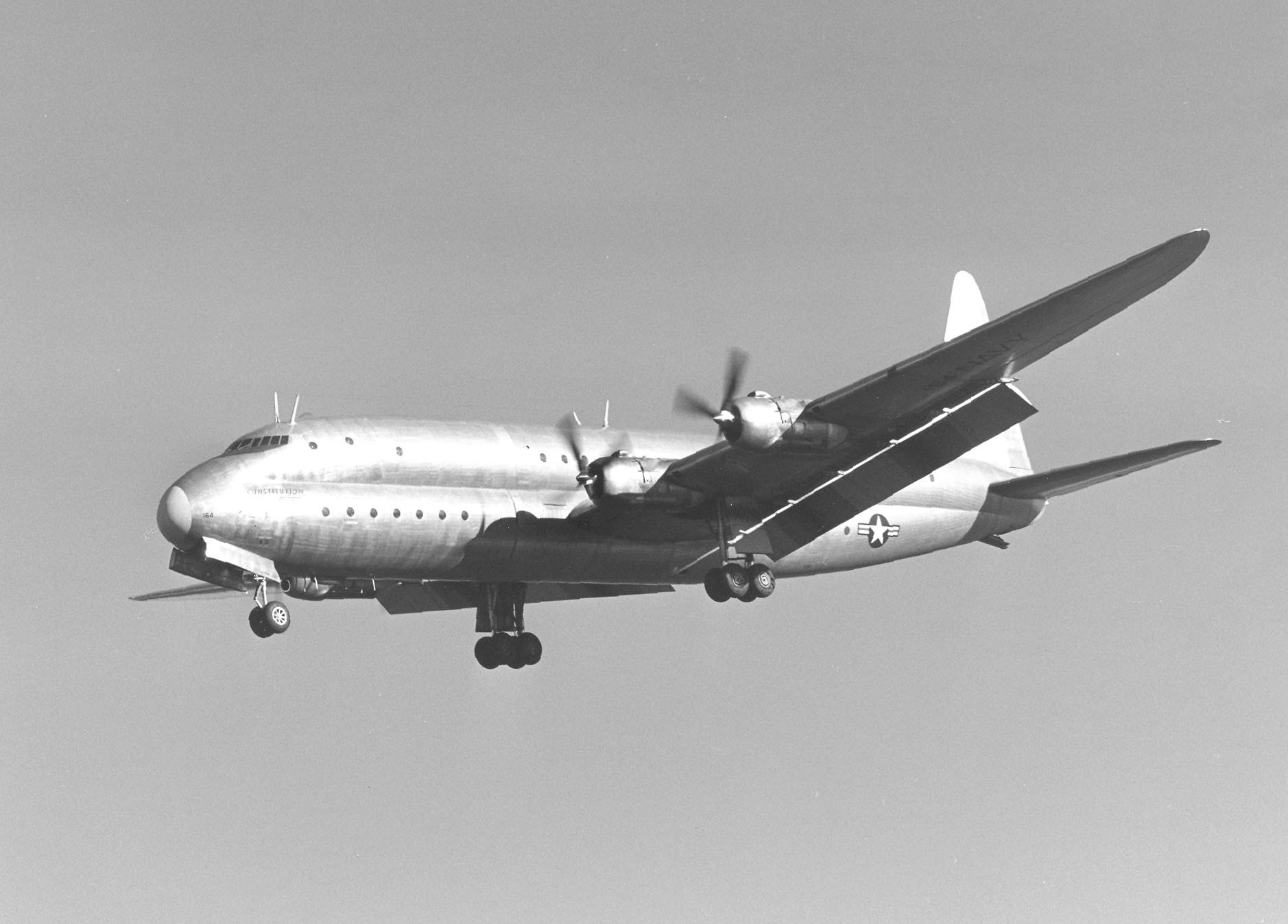HOME | DD
 GeneralTate — Lockheed R6V Constitution
GeneralTate — Lockheed R6V Constitution

Published: 2018-06-04 01:24:32 +0000 UTC; Views: 1182; Favourites: 28; Downloads: 10
Redirect to original
Description
The XR6O-1 Constitution landing at NAS Moffett Field . Photographer unknown.The Lockheed R6V Constitution was a large, propeller-driven, double-decker transport aircraft developed in the 1940s by Lockheed as a long-range, high-capacity transport and airliner for the U.S. Navy and Pan American Airways . Only two of the aircraft were ever built, both prototypes. Although these two planes went into service with the Navy, the Constitution design ultimately proved underpowered and too large for practical airline use at the time. Although the Martin JRM Mars flying boat had a slightly longer wingspan, the Constitution remains the largest fixed-wing aircraft type ever operated by the U.S. Navy.
Role: Transport aircraft
Manufacturer: Lockheed
First flight: 9 November 1946
Primary user: U.S. Navy
Number built: 2
Design and development:
The Lockheed Constitution began life in 1942 as a joint study by the U.S. Navy, Pan Am , and Lockheed. The design requirements, initially designated Lockheed Model 89, called for a large transport aircraft to improve upon the Navy's fleet of flying boats . Pan Am was involved in the study because such an aircraft had potential use as a commercial airliner. This transport would carry 17,500 lb (7,900 kg) pounds of cargo 5,000 miles (8,000 km) at a cruising altitude of 25,000 feet (7,600 m) and a speed greater than 250 mph (400 km/h). The aircraft would be fully pressurized and large enough so that most major components could be accessed and possibly repaired in flight. For instance, tunnels led through the thick wings to all four engines.
The aircraft was designed by a team of engineers led by Willis Hawkins and W.A. Pulver of Lockheed and Commander E. L. Simpson, Jr. of the Navy. The name Constitution was given to the project by Lockheed president Robert E. Gross .
The Constitution design had a "double bubble" fuselage, the cross section of which was a "figure eight". This unorthodox design, originally created in 1937 by Curtiss-Wright 's chief aircraft designer George A. Page Jr. and first introduced with the Curtiss C-46 Commando , utilized the structural advantages of a cylinder for cabin pressurization , without the wasted space that would result from a single large cylinder of the same volume.
The original contract from the Bureau of Aeronautics called for 50 Constitutions for a total price tag of $111,250,000. On VJ Day , however, the contract was scaled back to $27,000,000 for only two aircraft.
Final disposition:
The Constitution had operational difficulties which prevented it from meeting its original design objectives. The large airframe needed more power than the four Pratt & Whitney R-4360s could deliver, and the engines had cooling problems. While this could be compensated for by flying with engine cowl flaps partially open, it increased drag and decreased range.
The Navy operated the two Constitutions through the end of the 1940s and into the 1950s. By 1949 the Navy announced that it could no longer afford to operate them, and offered them to airlines on a five-year lease. There was no interest from airlines in using the Constitutions (the airline version was named the Model 189), so the Navy retired both aircraft in 1953. They went into storage at NAS Litchfield Park , Arizona in 1955. Both aircraft and 13 spare engines were sold for $97,785. Lockheed proposed the Model 389 and Model 489 airliners based on the Constitution, which would have accommodated up to 169 passengers. Neither of these "paper" projects received much interest from civil operators.
The first Constitution was brought to Las Vegas , where it served as an enormous billboard for Alamo Airways, before being scrapped by Howard Hughes when he acquired the property. The second Constitution was flown to Opa-Locka Airport , Florida, where it was damaged by an internal fire. It was stored on the airfield until the mid-1970s, then was towed to an empty lot several miles from the airport. There were plans to convert it to a restaurant and museum theme park. The project never materialized and the airplane was destroyed due to lack of funding and pressure from the city to have it removed.
General characteristics
- Crew: 12
- Capacity: 168 passengers
- Length: 156 ft 1 in (47.6 m)
- Wingspan : 189 ft 1 in (57.6 m)
- Height: 50 ft 4.5 in (15.4 m)
- Wing area: 3,610 ft² (335.4 m²)
- Empty weight : 113,780 lb (51,610 kg)
- Loaded weight: 160,000 lb (72,600 kg)
- Max. takeoff weight : 184,000 lb (83,460 kg)
- Powerplant : 4 × Pratt & Whitney R-4360 radial engine , 3,000 hp (2,240 kW) each
Performance
- Maximum speed : 303 mph (490 km/h) at 25,000 ft (7,600 m)
- Cruise speed : 260 mph (418 km/h)
- Range : 5,390 mi (8,670 km)
- Service ceiling : 28,600 ft (8,700 m)
- Rate of climb : 700 ft/min (210 m/min)
























